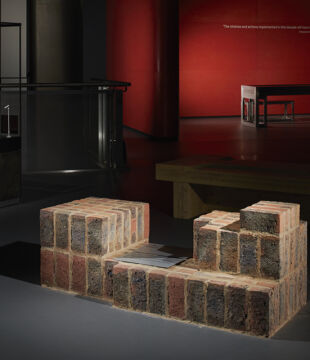
Details
Location: Marlow
Brick Manufacturer: HG Matthews
Brick Names: Handmade light multi and wood fired
Architect: Napier Clarke Architects
Brickwork Contractor: DSC UK Ltd
About the project
The existing property is a small but beautiful Victorian artists cottage built by Peter Borgnis in 1859, on the first floor is a bedroom and studio with tall ceilings and on the ground a small kitchen and living room. The cottage was constructed with handmade red and wood fired bricks, with coining and a slate roof. To the rear was a relatively constrained garden on a slope with a 1970s yellow brick garage. Our brief was to create a 4-bedroom house with ample living, which was to be achieved with an extension and the refurbishment of the existing.
We have a consistent approach to all our projects, which is to create contemporary contextual buildings that relate to their site, surroundings, forms and materials. We design buildings that use local materials and local labour to minimise our carbon footprint. The proposal is a single storey rear addition that steps up the slope to create a large living space, 3 bedrooms and 2 bathrooms. We chose to use the same materials as the main house, so handmade red and wood fired bricks by HG Matthews. The forms and detailing are minimised to create a simple yet distinctive addition that is subservient to the original house, a positive for planning. We wanted the new brick building to read like a modern version of the old, we wanted the quality of the brick to take priority and the simplification of the details focuses the eye on the texture and colours of the handmade brick.
The flat roofs are laid with sedum and roof lights to give top light to the living space and corridor. The large openable west facing glazing gives views to the fields, west light and creates an openness to the garden. The glazing has external venetian metal blinds concealed behind the timber battens to give privacy, black out and shading from solar gain. The rear brick wall creates a boundary to the road and the neighbouring properties, with the red bricks detailed in English bond and the wood fires as a band of headers creating a capping and banding that is present in the original house. We used lime mortar to remove the need for weep holes and movement joints, created an uninterrupted boundary wall.
The existing building was completely refurbished, with insulation added where possible, new roof, new windows, new floors, electrics, plumbing and floor and wall finishes. We also removed the loft to create vaulted spaces to reveal the structure and volume in the artist studio.
The new building is heated with underfloor heating powered by a new boiler and PVs located on the rear of the existing roof. The existing is heated via radiators. All areas are naturally ventilated with mechanical vents limited to bathroom and kitchen.
Sponsored by Brick Awards

The Annual Brick Awards is an Architectural competition aimed at attracting and showcasing architects wishing to submit their brick projects for recognition and celebration. Attracting 300 entries in 17 hotly contested categories every year, it has become one of the most popular events in the construction calendar. If you wish to sponsor this award, please contact George Spreckley
















